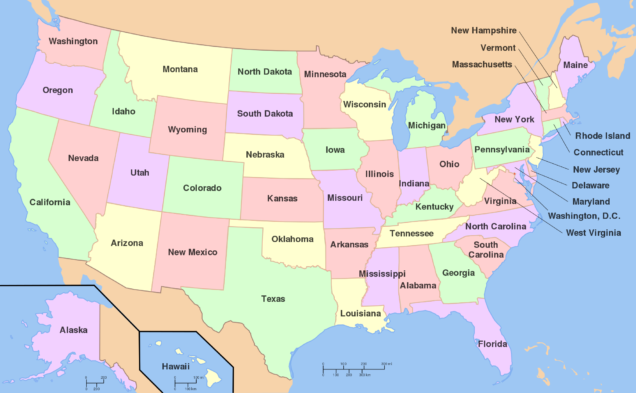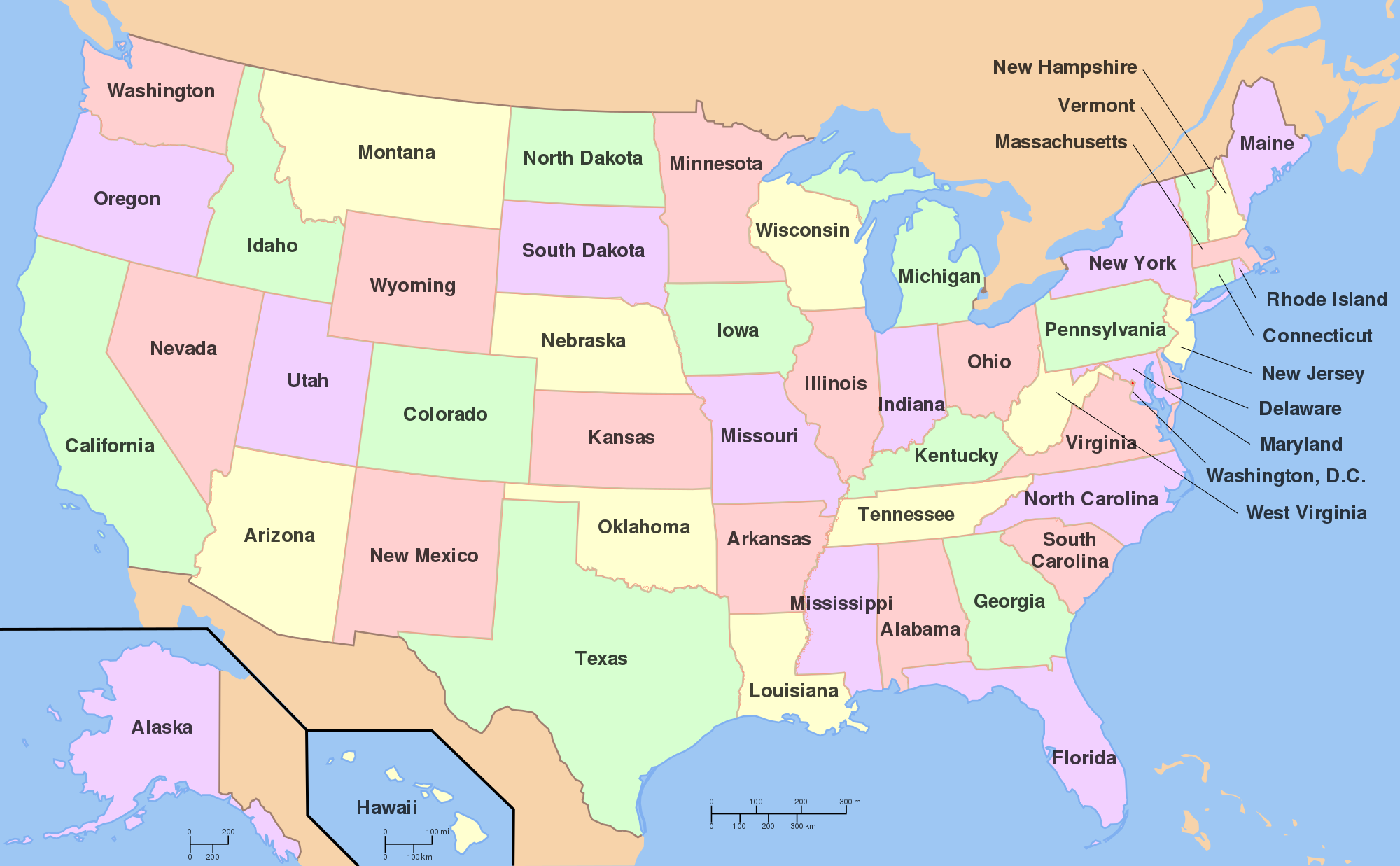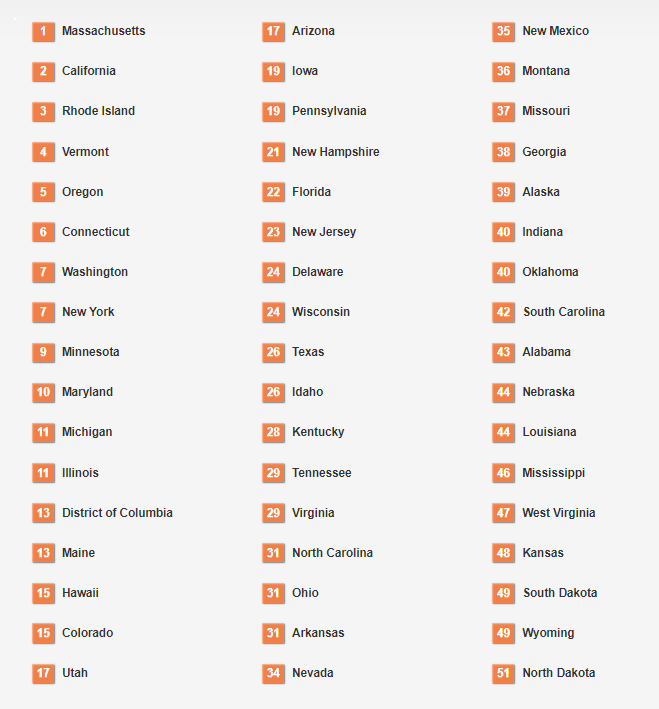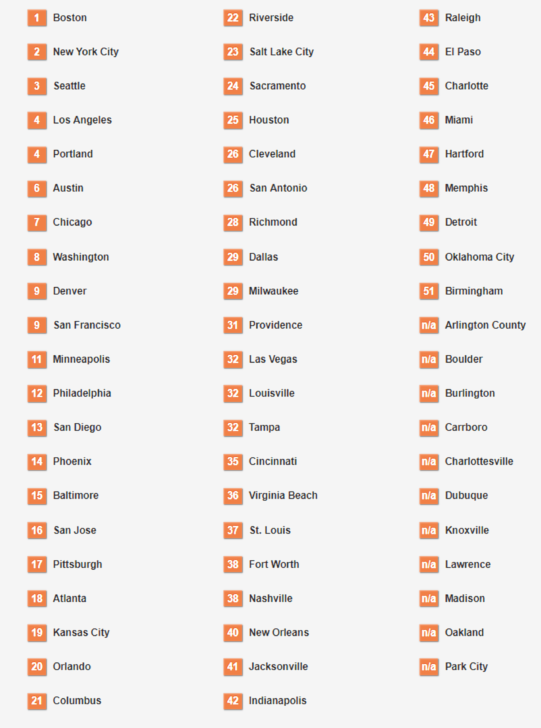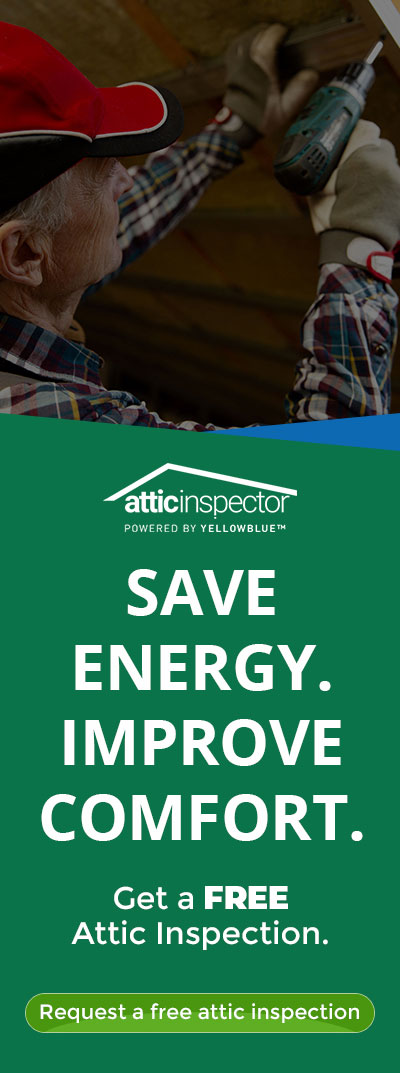Curious how much energy your city or state burns?
Thanks to the database at the American Council for an Energy-Efficient Economy, we can find out exactly which areas of the country take the most care of their energy consumption.
Check out the interactive database here.
So what did ACEEE find?
Breaking Down The Breakdown
The goal of the database is simple: detail and rate the energy-conscious laws, regulations, policies, and programs of states and major cities around the country. Once all these factors have been assessed, the organization grants the location a rating on a 50-point scale.
Categories
To fully capture every aspect of a location’s energy-efficiency rating, ACEEE uses a multi-leveled rating system.
State
Here, ACEEE takes into account how much the state’s government is doing to impact energy efficiency. This includes financial incentives provided, how many building types are allowed to be considered for such incentives, and how difficult the government makes it for buildings to become more energy-efficient. It also considers the energy-efficiency of public transport and how internally proactive the government is being toward researching and implementing further energy-efficiency measures.
As they zoom in on a location, they will further analyze how each municipality or district is utilizing and abiding by these measures. Each city listed in the database has a detailed “Local Government” section; while these details are reserved for major metropolitan areas, the local governments throughout the states are factored into the state’s composite final score.
Cities
The database also ranks major cities throughout the country with a similar methodology as used on the state level. After they assess the local government’s strengths and weaknesses, ACEEE starts to look at the community-wide initiatives focused on energy-efficiency.
ACEEE ranks how residential and commercial building codes impact the location’s ability to pursue better energy-efficiency options. Additionally, they look at the water and utility requirements most commonly seen throughout a city and assess whether they are designed with any semblance of energy-efficiency tactics.
ACEEE Database Scorecard Highlights
ACEEE State Energy Efficiency Scorecard
Considering these rankings are based on the level of state/local government effort, it’s not surprising which states lead off the list. The top 10 ranked states are filled with consistently Democratic-voting states. Massachusetts, California, and Rhode Island lead the way with the most energy-efficiency programs, incentives, and initiatives, with Vermont and Connecticut not far behind.
It’s interesting to note that even the top-ranked state, Massachusetts, only received a 44.5 score out of 50, suggesting the energy-efficiency of even the most green-friendly state governments aren’t at the best they can be.
ACEEE City Energy Efficiency Rankings
At the top of the list, we see Boston with the #1 one spot and Seattle with the #4 spot. Hartford, Connecticut falls to #47, an incredibly low spot for a major city in an aggressively blue state.
Denver and San Francisco are tied for 9th place, both receiving a 70.5/100. Both cities have poor transportation scores and have the same utility score. Denver’s local government scored a 9/10, while San Francisco’s scored a 6/10, but San Francisco holds slight leads in all the other categories.
In general, there’s a lot of wiggle room when it comes to how energy efficient your local city might be.
How To Use This Information
So it’s a neat database, but beyond curiosity, what purpose does it serve? First and foremost, homeowners can utilize this information to recognize financial advantages available to them through their local government.
Different localities can offer varying assistance to those who are willing and able to invest in green construction. This article details how you can find which legislation and incentives you might be afforded.
Beyond the database itself, ACEEE as an institution is a critical resource for keeping tabs on your local government’s initiatives and plans regarding energy-efficiency. Their website breaks down how energy efficiency has integrated into federal, commercial, and residential levels across the country. If you want to stay ahead of the curve and possibly find yourself some nice incentives, take full advantage of the resources and information ACEEE provides.
Want To Take Advantage?
Contact yellowblue today to see how we can help find you energy efficiency improvement opportunities.

